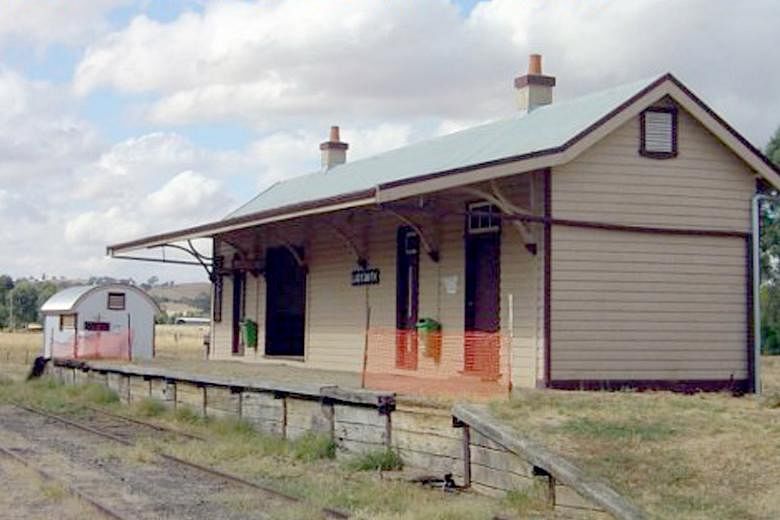In the Australian countryside, it is not unusual to stumble across the relics of a vast abandoned rail network that once connected the nation before cars and trucks replaced trains as the preferred mode of transport.
These remnants of a forgotten past can range from rail tracks hidden in farm paddocks to majestic stations overlooking silent platforms that have not been used in decades.
This ghost rail network spans thousands of kilometres - a reminder of the population's shift over the past century from rural townships to bustling coastal cities.
But there has been a growing push in recent years to find new uses for the old lines, particularly as so-called "rail trails", where the routes are converted into bike tracks, hiking trails and horse-riding paths. Meanwhile, old stations have been given new uses, including as cafes or museums.
The aim is to preserve the heritage while attracting tourists and visitors to remote areas that are often otherwise inaccessible.
In New South Wales, Mr John Moore started an organisation in 2014 called Rail Trails for NSW, which last year helped push for the passage of legislation allowing the old lines to be used for trails.
-
3,100km
Unused rail lines in New South Wales. There are thousands more in other states.
The state government has started building its first trail, a 21km track connecting the small towns of Tumbarumba and Rosewood in the south-west.
Mr Moore said he had ridden a bike along various trails already established in other states, saying the experience was "magical".
Typically, he said, the rail tracks are removed and the trail is created as a sealed or gravel path.
"You are riding in spectacular country which has probably not been seen by anyone for years, except farmers," he told The Sunday Times. "You stop at a table by the side and have a drink and move on."
Mr Moore said there were about 3,100km of unused rail lines in New South Wales and thousands more in other states. The lines once used for passengers and freight became obsolete after trucks could be used to deliver produce directly from farms to warehouses and ports.
"The rail trails are an economic boon to these towns," he said. "They bring tourists who are prepared to spend money and stop overnight. Dormant country towns have prospered."
The federal and Queensland state governments last year approved funding to complete the country's largest trail, a 161km track near Brisbane. The trail is due to be completed by June along a line that was built in the 1880s and closed almost 30 years ago.
The trails have helped to attract tourists to rural areas, which have been struggling in recent decades as farms consolidated and residents moved to cities.
Tourism expert David Beirman, from the University of Technology Sydney, said finding uses for old train facilities was a clever way to attract visitors, noting that "there is a certain romance attracted to rail".
He said signs along trails telling the local history could be used to "give the place an extra meaning".
"Rail tracks carved a highway of sorts through some difficult countryside and they can now have a second life as walking trails," he told The Sunday Times.
"There are multiple uses for the old stations - they can be a visitor centre, a community centre, a museum, a restaurant, a shop or a guest house. It just depends on the imagination of the local community."
He added: "It is better to do something with them than to flatten them."
Despite often enthusiastic community support for rail trails, farmers have sometimes objected to the creation of tourist routes that run through their properties. Some say the trail would divide their property or result in rubbish being left. In most cases, local councils have helped to devise a compromise.
Aside from rail trails, the other push for some of the old lines is perhaps less radical. There is a growing interest in reusing them for actual trains, either as scenic tourist routes or for freight-only industrial use, particularly for the agricultural and mining sectors.
Last month, in the popular tourist town of Byron Bay, a 70-year-old train began running on a disused 3km rail track. The train, which can carry 100 people, has solar panels and a battery. Believed to be the world's first solar-powered train, the line connects two beaches and is expected to be used by residents, tourists and surfers.

